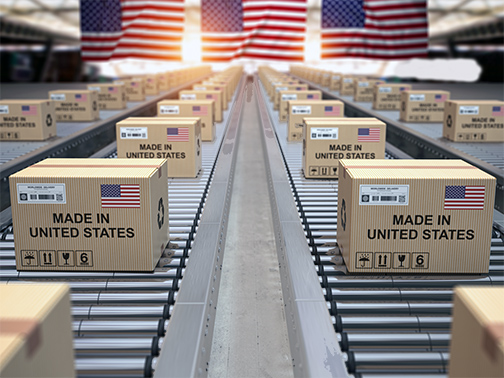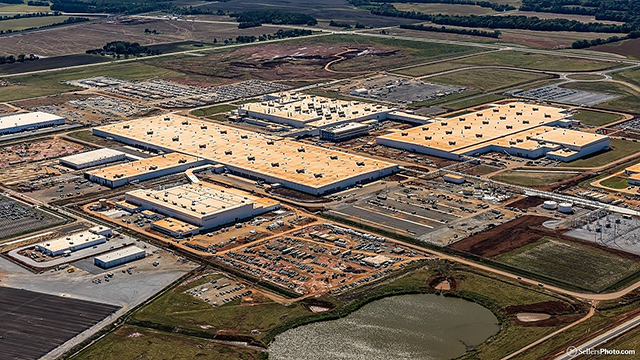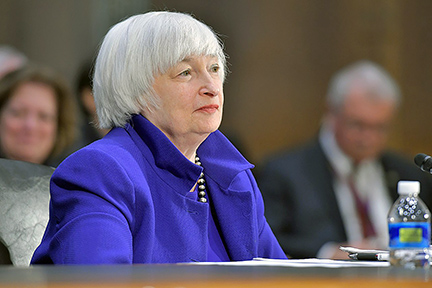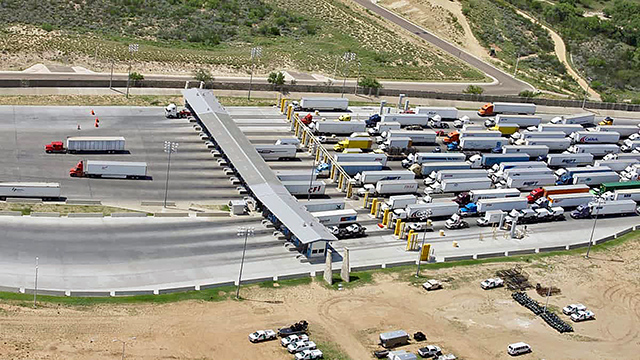
Manufacturing growth data from the Institute for Supply Management in March showed that output to begin the year is far better than expected. The Atlanta Federal Reserve, which tracks data such as GDP growth, is indicating a 10 percent gain for the first quarter of the year. With a total of 60.8 percent in February, manufacturing growth saw a three-year high in February. The second round of PPP funding is now being paid, and in the first week of March, the U.S. Senate passed President Biden’s $1.9 trillion stimulus plan.
Several sources are predicting that calendar year 2021 will be the biggest job generating year since records began in 1939. The data firm, IHS Markit, predicted in January that non-farm payrolls will increase by 6.7 million this year. Oxford Economics estimates that 5.8 million jobs will be created in the U.S. in 2021, and the University of Michigan reported 5.3 million. All totals would surpass the current record of 4.3 million jobs created in 1946 at the end of World War II.
 Foreign direct investment cratered in 2020
Foreign direct investment cratered in 2020
Global foreign investment fell a remarkable 42 percent in calendar year 2020. It went from $1.5 trillion in 2019 to an estimated $859 billion last year, according to the UNCTAD Investment Trends Monitor published on January 24. These trade flows between nations are expected to remain weak due to the the COVID-19 virus. The trade numbers are 30 percent below the drop in trade during the Great Recession of 2007-2009.
The U.S. loses its title as the world’s top destination for new FDI
China topped the U.S. as the No. 1 destination for new foreign direct investment in calendar year 2020, a spot that been held by the U.S. for decades. But, FDI in 2020 fell by 40 percent, according to United Nations data. So, China’s ranking is really a result of the crater in FDI in the U.S., more than an increase in companies investing in China. Foreign company investments in China only rose 4 percent in 2020. FDI in the U.S. totaled just $134 billion in 2020. . .it peaked in 2015 at $440 billion, with more than 10 percent of that total coming from China. In 2020, China saw a total of $163 million in foreign investment inflows, topping the U.S. for the first time ever. Experts say that the pandemic and former President Trump’s go-it-alone tariffs were the main contributors to the FDI collapse in the U.S. last year.
Record lows in U.S. population growth
In the winter quarter, the Census Bureau released estimates that from July 1, 2019, to July 1, 2020, the nation’s population grew by just .35 percent. The figure represents the lowest annual population growth since records began in 1900. Census also estimated that population growth in the decade of 2010 to 2020 was the lowest of any decade in the nation’s history.
At the end of 2020, job growth was exclusive to the South
As last year ended, the South led all U.S. regions in job recovery as it created hundreds of thousands of jobs. Texas gained the most jobs in December with 64,200. Georgia placed second with 44,700. In comparison, job growth in the Northeast, Midwest and West was nonexistent.
Decrease in 2020 economy most since 1946
The U.S. economy shrank by 3.5 percent in calendar year 2020, the worst performance since the year after World War II. The economy did grow by 4 percent in the fourth quarter, but that was not enough to counter the losses in quarters 1, 2 and 3, according to the Commerce Department.
Virus and a struggling economy create the worst poverty rate since the 1960s
According to a report from the University of Chicago and University of Notre Dame, 8 million Americans fell into the government’s definition of poverty during the year 2020. It is the largest spike in poverty since the 1960s. At the end of December 2020, the overall poverty rate in the U.S. rose to 11.8 percent.
 Secretary of Commerce Yellen: Offshoring tax penalty to keep U.S. companies at home
Secretary of Commerce Yellen: Offshoring tax penalty to keep U.S. companies at home
Part of President Biden’s “Made in All of America” plan is raising the corporate tax rate to 28 percent, but also imposing a 10 percent offshoring penalty tax on U.S. goods and services produced overseas. Janet Yellen said that the president’s offshoring tax penalty would incentivize U.S. companies to “create and maintain jobs at home.”
Reshoring is happening
As a result of the COVID-19 pandemic and a trade war with China, U.S. companies are rethinking the strategy that has been prevalent for years — outsourcing manufacturing to low-cost labor markets in Asia. A survey by New York-based Thomas, an industrial sourcing firm, showed that 69 percent of businesses are “likely” or “very likely” to reshore or nearshore operations to secure their supply chains. That is up from 54 percent in the same month last year.
Tennessee sees largest one-way moves in the nation
According to U-Haul’s annual report of one-way moves, Tennessee saw the largest net gain in new residents in 2020. Tennessee saw a 12 percent jump in new arrivals, topping Texas and Florida. According to the report, Knoxville saw a 23 percent increase in new one-way arrivals.
Arkansas-based Walmart to spend $350 billion on goods made, grown or assembled in the U.S.
Over the next 10 years, Walmart will spend about $350 billion on goods made or grown in the U.S. The purchases will help create 750,000 jobs, according to the company. The giant retailer made a similar commitment in 2013, when it said it would invest $250 billion in American-made goods.
Texas No. 1 in the U.S. for commercial development
The pandemic did nothing to slow commercial real estate development in the state of Texas. Last year, real estate development contributed more than $65 billion to the Texas economy. That is over $10 billion more than in 2019. Texas led all states in real estate development in 2020.
More venture capital funding flowed into Dallas-Fort Worth
In calendar year 2020, more venture capital flowed into D-FW than any other metro area in the United States. Investments in D-FW companies grew by 66 percent from the previous year. The other four metros making the top five in venture capital growth were Portland, Atlanta, Salt Lake City and San Diego.
Dallas-Fort Worth led country in industrial building in 2020, but office leasing down dramatically
According to Cushman & Wakefield, Dallas-Fort Worth led all other markets in industrial building in 2020. Almost 27 million square feet of industrial space was under construction in the D-FW metro at the end of last year. Chicago was second with 20.7 million square feet of construction. The office real estate sector in Dallas-Fort Worth did not fare as well. A large decline in office space occupancy in the fourth quarter of 2020 saw net leasing drop nearly 4 million square feet in 2020 in D-FW.
Corps approves money to deepen Mississippi River Channel
In the winter quarter, the Army Corps of Engineers will spend $45.7 million to finish deepening the Mississippi River — from Baton Rouge to the mouth of the river at the Gulf of Mexico — to 50 feet. The depth will allow larger Panama ships to navigate the river.
Mississippi Development Authority officially names director
The Mississippi Development Authority, the state’s primary economic development agency, has named John Rounsaville as its permanent director. Rounsaville had been the interim director after the retirement of Glenn McCullough. Mississippi’s Gov. Tate Reeves named Rounsaville as permanent director after Mississippi captured several high-profile projects in the tough economic environment of 2020.
Atlanta to become one of Microsoft’s largest hubs
Microsoft announced in the winter quarter that Atlanta will eventually become one of the largest hubs for the company worldwide. The company is planning new office space in Atlantic Yards with room for up to 2,500 employees. Microsoft is also building multiple data centers in the Atlanta area, for a new “East U.S. 3” cloud region.
Life sciences has good year in North Carolina
Life sciences firms in North Carolina had an excellent year in 2020, as many are expanding their capacities to make pharmaceuticals and biological therapies in the state. Expansions in North Carolina saw $2.3 billion in investment with about 2,800 new jobs created in 2020.
In Montgomery, Ala., business confidence is high
The Alabama Business Confidence Index has Montgomery topping all other cities in the state in the first quarter of 2021. The index is done by the University of Alabama’s Center for Business and Economic Research. Montgomery led all cities in Alabama with score of 58.8 in the first quarter of 2021.
Forbes: UAB is America’s best large employer
The University of Alabama at Birmingham (UAB) was named “America’s Best Large Employer” by Forbes magazine. UAB was picked ahead of other schools such as Yale University as well as 500 public and private companies. UAB is Alabama’s largest public employer and home to one of the region’s largest academic medical centers. UAB employs more than 23,000 people.
Texas, again, No. 1 export state
For the 19th consecutive year, Texas is the No. 1 exporting state for calendar year 2020. Texas exports totaled $279 billion, larger than the sum total of goods exported by the next three largest exports states — California ($156 billion), New York ($62 billion) and Louisiana ($59 billion).
 Port Laredo No. 1 in exports again
Port Laredo No. 1 in exports again
Laredo, Texas, again led all U.S. markets in exports according to Census Bureau data analyzed by WorldCity. It is the second year Port Laredo finished on top. Some of the Port’s exports include motor vehicle parts ($8.9 billion), engines ($3.4 billion) and gasoline ($3.1 billion).
Alabama DOC launches ‘RurAL” campaign
The Alabama Department of Commerce rolled out a digital marketing campaign in the winter quarter to promote rural commerce in the state. Called “RurAL,” the website campaign showcases the business advantages of the state’s rural communities and shares the success stories that energize their economies.
Two-thirds of Kentucky jobs restored
According to the Kentucky Chamber of Commerce and the Center for Business and Economic Research at University of Kentucky, the state has recovered nearly two-thirds of the jobs lost during the early stages of the COVID-19 pandemic. Kentucky’s gross domestic product increased at an annual rate of 41.2 percent in the third quarter of 2020. That outperformed the nation, which saw 33 percent growth, according to the U.S. Bureau of Economic Analysis. The state figure comes on the heels of a second quarter drop-off of 34.5 percent.
Winners and losers in a trade war
By Michael Randle
So, let’s take a look at U.S. trade policy that is currently in place. The new Biden administration finds itself in a situation not seen in decades. The U.S. has had minor trade wars in the past with Japan, Canada, Latin America and others. (Remember the trade war with Japan in the mid-1980s?) But trade wars of the past are nothing like those that the Biden administration is facing today. . .wars with China and other nations that were implemented during the last administration.
You have to go all the way back to 1930 to witness a trade war to equal what we have seen over the last four years. Now President Biden’s administration must decide what to do with the protectionist policies that remain in place. It will not be an easy task to restore supply chains.
The Smoot-Hawley Act of 1930 was passed by Congress during the early years of the Great Depression. The act took its name from Senator Reed Smoot of Utah and Representative Willis Hawley of Oregon. Sources say that over 1,000 economists in the U.S. urged President Herbert Hoover to veto the act that essentially placed tariffs on all kinds of imports — more industrial in nature as opposed to tariffs on agriculture. They were a “double down” by the U.S. in an attempt to put America’s economy on a more sure footing.
In what was already a depressed economy, the tariffs contributed to U.S. exports falling by 61 percent in 1933. Countered by other nations, they failed miserably, and Herbert Hoover lost the next election to Franklin D. Roosevelt. In 1934, Roosevelt’s Reciprocal Trade Agreements Act replaced the Smoot-Hawley tariffs. This legislation allowed the U.S. to re-negotiate tariff reductions. That’s kind of where the Biden administration finds itself now after a worldwide assault on free trade by the Trump administration.
Much like Herbert Hoover, instead of opening markets for trade, the Trump administration restricted market access, therefore reducing economic opportunities, not only in the U.S., but for most of the world. Most economists believe that opening markets creates higher living standards for all. President Trump believed free trade helps create higher living standards for all but Americans, even though most economists would disagree. So, how did that go, and what is President Biden’s administration going to do about it?
Well, if Biden is more free trade than not — and he is — then he has an impressive list of tariffs to roll back. Trump’s tariffs — put in place by executive action, not by Congress — created severe retaliation from other nations. U.S. consumers and businesses — not the nations of origin — paid higher prices for many things, including foreign-made steel, solar panels, wine, cheese and aluminum to name a few. In addition, there were tariffs on thousands of Chinese-made items.
These protectionist policies create winners and losers. The losers are the companies that make and assemble things in the U.S. — American-made products — that are sourced from foreign made products, such as imported aluminum. The winners are those companies that make aluminum in the United States. Once the tariffs were put into place, both domestic and foreign-made aluminum went up in price by about 10 percent because of the lack of competition.
Let’s look at the job data regarding these tariffs: The Tax Foundation reported last fall that the Trump tariffs cost Americans $80 billion in the additional cost of goods. The same source claimed the tariffs lowered employment by 179,800 jobs. A study by the U.S.-China Business Council (USCBC) that came out in January 2021, claimed that former President Donald Trump’s trade policies, particularly with China, cost the U.S. 245,000 jobs during his term. In addition, the Congressional Research Service reported that $100 billion of U.S. exports had faced tariff restrictions.
Lost jobs, reduced sales and higher costs. . .that’s what tariffs do. Less is sold and what is sold costs more. This will continue until the Biden administration rolls back most, if not all, of these tariffs.